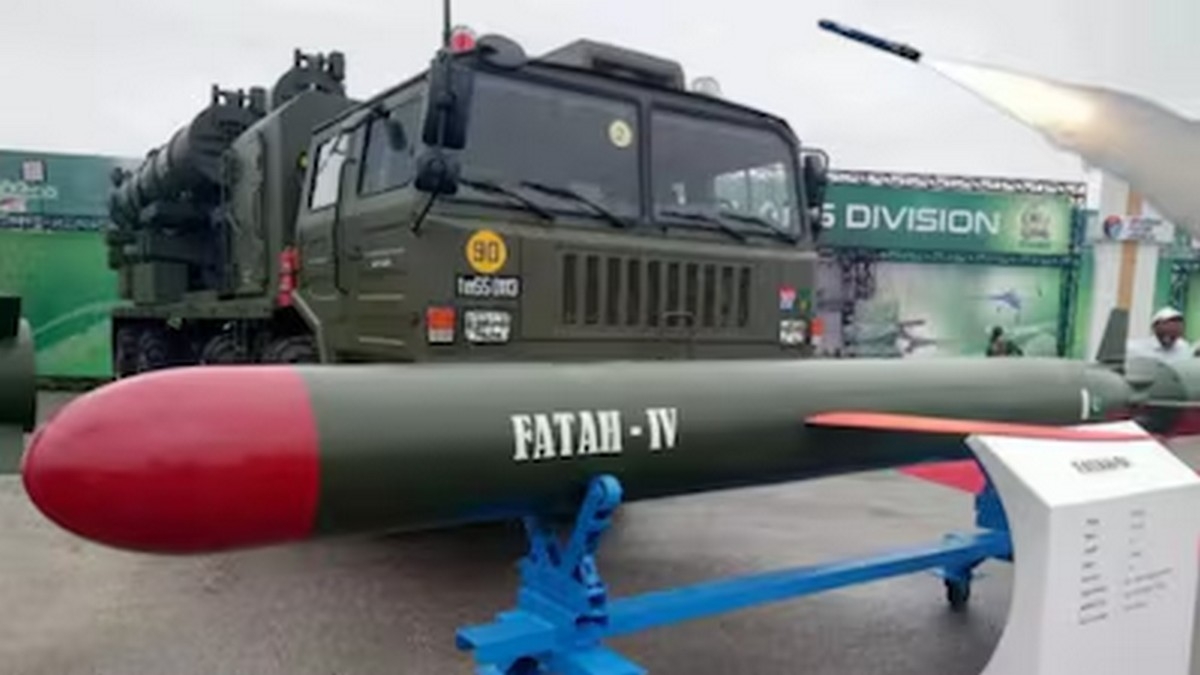Pakistan has a new weapon.
The country announced that it has successfully test-fired the indigenously developed Fatah-4 missile on Tuesday (September 30).
The Inter-Services Public Relations (ISPR) said in a statement that the Fatah-4 is equipped with advanced avionics and state-of-the-art navigational aids. The ISPR said the Fatah-4 can avoid enemy air defences through terrain-hugging flight and hit targets with high accuracy.
It said the Fatah-4 missile will further enhance the reach, lethality and survivability of Pakistan Army’s conventional missile systems as part of the Army Rocket Force Command (ARFC) – the formation of which Pakistan had announced last month.
What we know
The Fatah-4 is a long-range, surface-to-air cruise missile. Weighing around 1,530 kilos, the missile is around 7.5 metres in length. It is said to have a maximum range of around 750 kilometres. It can carry a warhead weighing around 330 kilos. It is made to carry conventional munitions and not nuclear warheads.
The Fatah-4 flies at a subsonic speed of around Mach 0.7 (865 kilometres per hour) at a height close to the terrain to avoid detection by radar – just around 50 metres above the ground. It is said to be extremely accurate with a circular error probable (CEP) of around five metres.
The missile is guided by a navigation suite comprising global positioning system (GPS ) and an inertial navigating system (INS). It is also said to include a targeting sensor system which fuses Electro-Optical/Infrared (EO/IR) and radar to hone in on a target. It is also said to come equipped with image-scene matching – possibly terrain contour matching (TERCOM).
It is said to use electronic countermeasures and AI to lock on to targets in difficult environments. The missile can be fired from transporter-erector-launcher (TEL) vehicles. It uses solid-propellant propulsion which allows it to be readied for launch and fired quickly.
What do experts say?
Experts say the Fatah-4 slides in between short-range tactical rockets and strategic, long-range missile systems. In that way, it is akin to India’s Nirbhay subsonic land-attack cruise missile. They say that if the claims made by Pakistan’s ISPR bear out, then the Fatah-4 will be an improvement over its earlier cruise missiles.
They say its range, if proved, will allow it to hit high-value targets far outside Pakistan’s borders. It also has the added advantage of not being a nuclear missile – thus not irrevocably raising the stakes. They think the timing of the test-firing and the previous unveiling on August 14, Pakistan’s Independence Day, was likely a signal to India.
However, they say that claims about its accuracy and range should be treated with a pinch of salt until independent reporting proves otherwise. They also say it remains to be seen how the missile performs in real-world conditions and how it integrates into Pakistan’s rocket force.
Pakistan’s military leadership including the Chief of General Staff, senior officers from Pakistan’s armed forces, as well as scientists and engineers were present at the launch. President Asif Zardari, Prime Minister Shehbaz Sharif and the services chiefs offered the scientists, engineers and troops their congratulations on the successful test firing.
Zardari claimed the test was a “milestone in Pakistan’s defence system.” He said it was evidence of the nation’s “scientific self-reliance.”
“Pakistan’s defence is and will remain impregnable,” Zardari added.
The development comes a week after India flight tested its Agni Prime intermediate-range ballistic missile. It also comes months after the conflict between India and Pakistan. New Delhi had launched Operation Sindoor in May in the aftermath of the Pahalgam terror attack in April that left 26 dead.
Prime Minister Narendra Modi in a speech warned that India will not succumb to nuclear blackmail and will treat terrorists and states that shelter them as one and the same.
With inputs from agencies
)